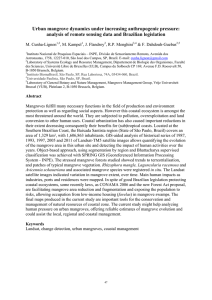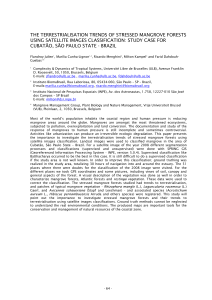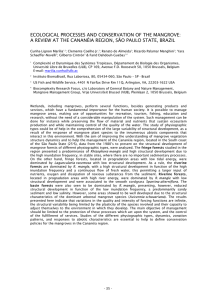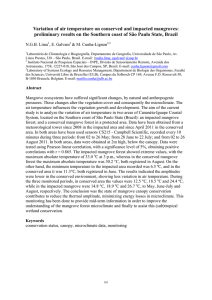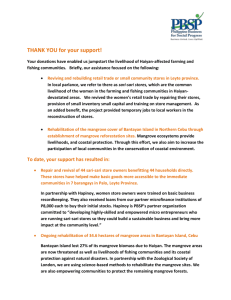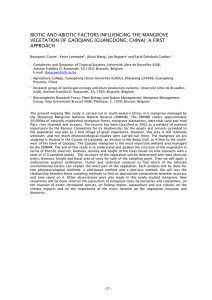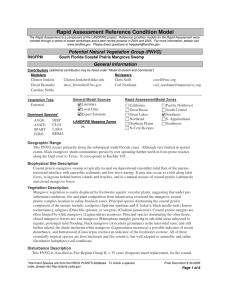Flandroy Julien , Marília Cunha-Lignon and Farid Dahdouh-Guebas
advertisement
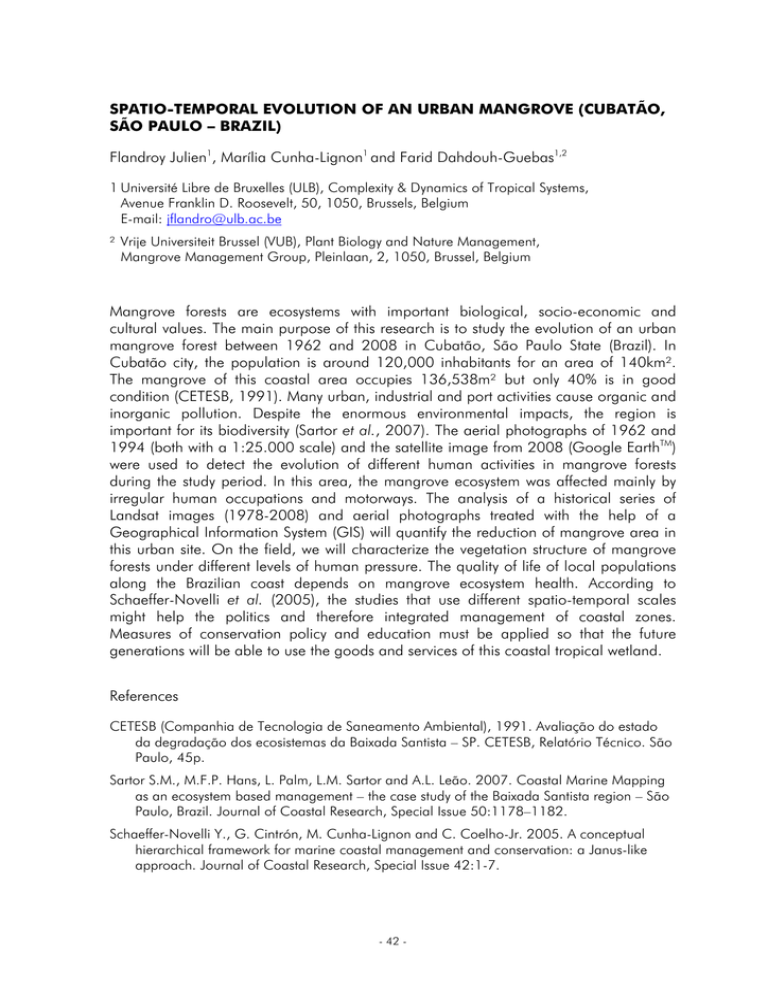
SPATIO-TEMPORAL EVOLUTION OF AN URBAN MANGROVE (CUBATÃO, SÃO PAULO – BRAZIL) Flandroy Julien1, Marília Cunha-Lignon1 and Farid Dahdouh-Guebas1,2 1 Université Libre de Bruxelles (ULB), Complexity & Dynamics of Tropical Systems, Avenue Franklin D. Roosevelt, 50, 1050, Brussels, Belgium E-mail: jflandro@ulb.ac.be ² Vrije Universiteit Brussel (VUB), Plant Biology and Nature Management, Mangrove Management Group, Pleinlaan, 2, 1050, Brussel, Belgium Mangrove forests are ecosystems with important biological, socio-economic and cultural values. The main purpose of this research is to study the evolution of an urban mangrove forest between 1962 and 2008 in Cubatão, São Paulo State (Brazil). In Cubatão city, the population is around 120,000 inhabitants for an area of 140km². The mangrove of this coastal area occupies 136,538m² but only 40% is in good condition (CETESB, 1991). Many urban, industrial and port activities cause organic and inorganic pollution. Despite the enormous environmental impacts, the region is important for its biodiversity (Sartor et al., 2007). The aerial photographs of 1962 and 1994 (both with a 1:25.000 scale) and the satellite image from 2008 (Google EarthTM) were used to detect the evolution of different human activities in mangrove forests during the study period. In this area, the mangrove ecosystem was affected mainly by irregular human occupations and motorways. The analysis of a historical series of Landsat images (1978-2008) and aerial photographs treated with the help of a Geographical Information System (GIS) will quantify the reduction of mangrove area in this urban site. On the field, we will characterize the vegetation structure of mangrove forests under different levels of human pressure. The quality of life of local populations along the Brazilian coast depends on mangrove ecosystem health. According to Schaeffer-Novelli et al. (2005), the studies that use different spatio-temporal scales might help the politics and therefore integrated management of coastal zones. Measures of conservation policy and education must be applied so that the future generations will be able to use the goods and services of this coastal tropical wetland. References CETESB (Companhia de Tecnologia de Saneamento Ambiental), 1991. Avaliação do estado da degradação dos ecosistemas da Baixada Santista – SP. CETESB, Relatório Técnico. São Paulo, 45p. Sartor S.M., M.F.P. Hans, L. Palm, L.M. Sartor and A.L. Leão. 2007. Coastal Marine Mapping as an ecosystem based management – the case study of the Baixada Santista region – São Paulo, Brazil. Journal of Coastal Research, Special Issue 50:1178–1182. Schaeffer-Novelli Y., G. Cintrón, M. Cunha-Lignon and C. Coelho-Jr. 2005. A conceptual hierarchical framework for marine coastal management and conservation: a Janus-like approach. Journal of Coastal Research, Special Issue 42:1-7. - 42 -
